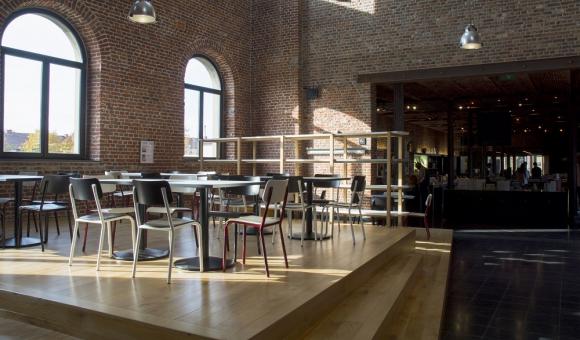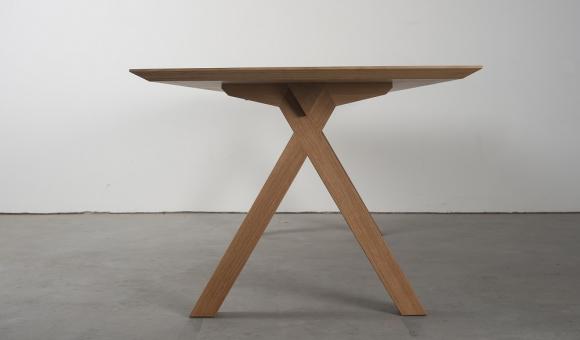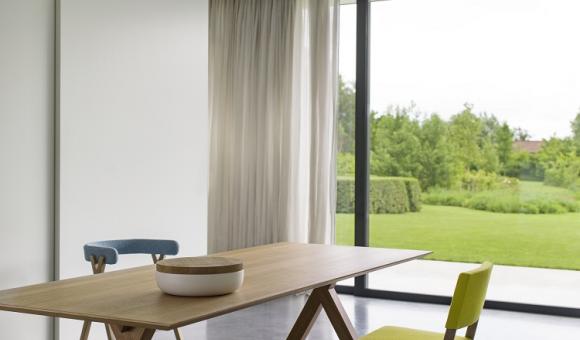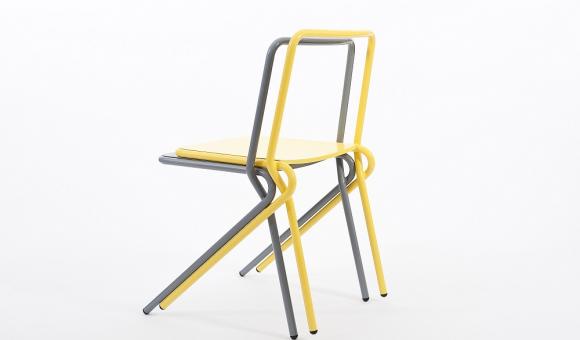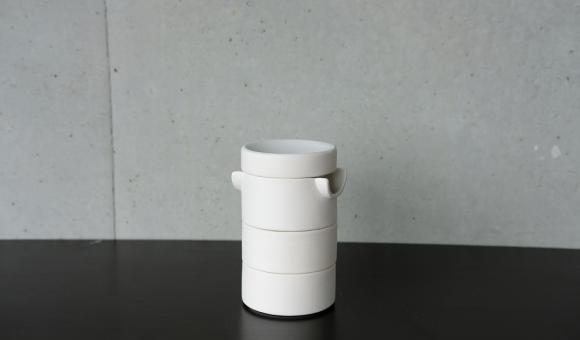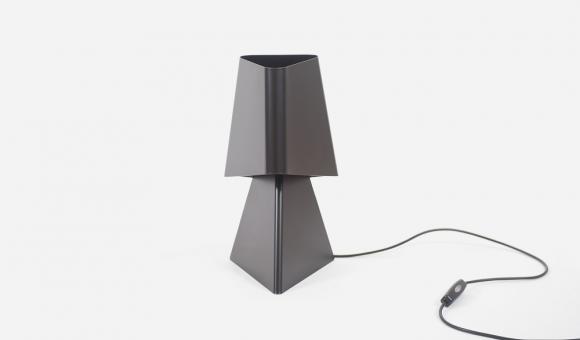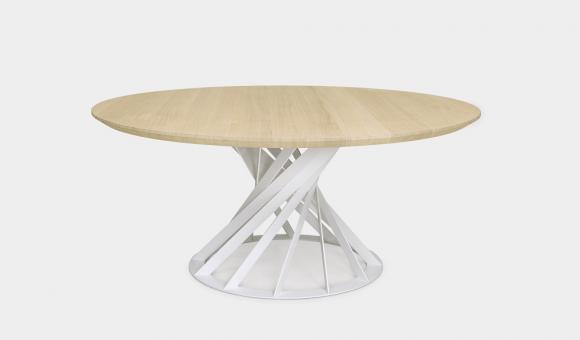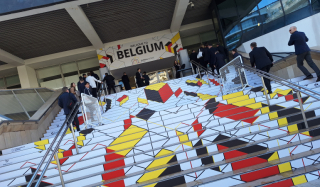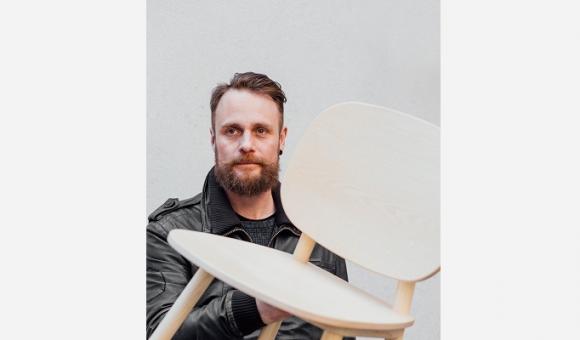
Interior designer, creator of objects, scenographer... At 41 years old, this Brussels native brings multiple crafts into coexistence within the studio he founded exactly 15 years ago. This pluralistic approach fits his vision of design, and has earned him his first solo show, at the CID in Hornu.
How was this innate desire to multitask conceived?
Through a combination of circumstances. I have a degree in interior design, but my true passion is designing objects. That’s where I started my career. I created my studio in 2004 after spending two years alongside Xavier Lust. Interior design came into my life much later, about two years ago. The scenography is then directly linked to La Fabrika, the furniture store of my companion Kelly Claessens. It was while organising an exhibition on knives for the stores that I created my first project as a scenographer.
So we could say that all your projects overlap?
It is indeed often the case. That exhibition convinced the Finnish cultural centre to choose us to curate an exhibit. And so on… It’s the same for all my projects. If, as has happened when designing an interior for a private home, I can’t find the kitchen cabinet handles I want, I create them myself. So it comes back to object design.
When you start off your career with Xavier Lust, does it then take time, when you launch your own studio, to find your own brands?
I interned at his studio when I was still a student. In the end, I stayed there two years. Xavier Lust and I followed the same path. Like me, he is an interior designer. His success in designing objects opened new perspectives for me. By working with him, I had the opportunity to meet editors and understand how that market works.
Learning is the common thread of your work, wouldn't you say?
I get bored quickly. I need to be continuously learning. When I start a new project, I systematically visit the production sites to understand how the workers and crafters work. To create the rigid frame for my Donald chair, a piece made of interconnected stainless-steel tubes, I carried out many tests at a metalworker's. It isn't so much the material itself that interests me, but instead the manufacturing processes involved in using that material. When I spend time at La Fabrika, I observe how the furniture arrives, if it is mounted or unmounted, as well as the packaging. It's very instructive. For the CID exhibition at Grand-Hornu, I created an accessory collection at the Keramis centre (an art and design space on the site of the former Royal Boch pottery in La Louviere). This project allowed me to visit the workshops to see how the production was progressing. My constant questioning guides my work. I tend to have a lot of doubts.
The solo exhibition at CID doesn’t quiet those doubts?
It is a recognition of my work, but I still had doubts throughout its development. I must have redesigned the scenography at least 10 times…
This is the doubt of an artist, isn‘t it?
I do not consider myself as such. My only similarity to an artist is my sensibility, which guides my projects. In my work, the aesthetic never takes precedence over material and function.
You are about to create the scenography for the joint stand of the designers supported by the WBDM at Milan. What similarities will there be to your CID exhibition?
In my scenography work, I take into account the ephemeral aspect of the installations. These days, you cannot design a stand without thinking about economising on materials and on recycling. I try to avoid the disposable. When possible, I retain the exposed structured. Whatever doesn’t need to be invisible remains visible. This approach enables me to create a new language of my own. It’s more than a search for economy. It’s a philosophy.
You live in Brussels. Is it important to you to keep these roots?
When I was starting out, I thought it was integral to my identity. Today, even though I love the creative effervescence of Brussels, I realise that influences circulate, and ideas are everywhere. But I do find that Belgium invests more than other countries in new talents, offering tools and design support. This is less so in France, for example. Myself, I need to collaborate with workshops in other regions of the country and in France. By not confining myself to a single place or a single type of project, I have space to breathe and to free my spirit. In my job, you can never say never. Why insist you will never work in plastic if an object made in this material (as long as it can be dismantled and easily recycled) has its own reason for being?
Interview by Marie Honnay
Wallonie-Bruxelles Design Mode is closely collaborating with TLMagazine for interviewing a selection of Belgian talents in fashion and design from Wallonia and Brussels, in order to promote them on the international scene. Read more articles on TLMagazine.
